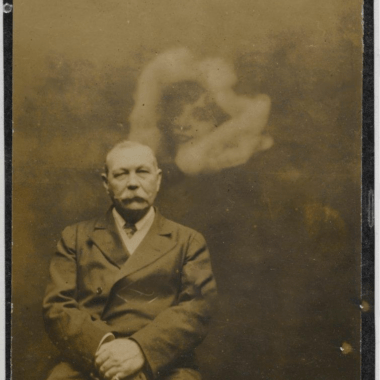- Introduction
- The origin of shamanism among the Germanic tribes
- Basic principles of Germanic shamanism
- Rituals and practices
- Runic magic and symbolic power
- Shamanic figures and deities
- Modern interest and reassessment
- Summary and conclusion
1. introduction
In the modern world, many look to ancient wisdom for guidance and deeper meaning. The culture of the Germanic peoples, with its rich traditions from the Thuringians, Frisians, Goths, Saxons, and far beyond the shores of the Danube, Rhine and the seas of the Vikings, offers such an inexhaustible treasure. This ancient wisdom, interwoven with Germanic mythology and the practices of shamanism, gives us access to forgotten ways of life and ideological perspectives that seem more relevant today than ever. The exploration of the Germanic runes, the deity of the Germanic tribes and the sun-god-centered Germanic religion offers a fascinating journey into the past of Central Europe and its Nordic myths.
This article will guide you through the captivating world of Germanic shamanism, revealing who the Germanic peoples really were and how their cultural and religious practices might have an impact on our modern understanding of spirituality and connection to nature. From basic principles and rituals to rune magic and the worship of shamanic figures and deities, we will uncover the relevance of these ancient wisdoms to the modern world and how a modern interest in them can change not only our view of the past, but also of the future.
2 The origin of shamanism among the Germanic tribes
Comparison with global shamanism
Shamanism among the Germanic tribes shows remarkable parallels to other shamanic traditions around the world. Historical and ethnographic comparisons suggest that despite geographical and cultural differences, similar shamanic practices and beliefs existed. Just as shamans in Siberia and parts of Asia acted as intermediaries between the human and spiritual worlds, Germanic shamans, often referred to as seers or sorcerers, had a similar role. Their practices included ecstasy techniques, otherworldly journeys and the use of magic plants that enabled them to enter other states of consciousness.
Historical evidence and archaeological finds
Archaeological finds support the theory that shamanism played an important role in Germanic culture. From the deer antler masks in North Rhine-Westphalia, which are comparable to Siberian shaman masks, to shaman drumsticks from Danish graves, these objects show that ritual and spiritual practices were deeply rooted in Germanic society. These finds not only prove the existence of shamanic rituals, but also their similarities with shamanic traditions in other parts of the world, indicating cultural connections or parallel developments.
3. basic principles of Germanic shamanism
The role of the world tree
The World Tree, often referred to as Yggdrasil in Norse mythology, is a central symbol in Germanic shamanism. It represents the connection between the three main planes of existence: heaven, earth and the underworld. This cosmic tree is at the center of creation and enables shamans to travel to different worlds through its branches and roots. The idea that the world tree serves as the world axis (axis mundi) can be found in many cultures, which underlines its universal significance. Shamans use this tree as a means for their spiritual journeys and initiations, as shown by Odin's self-sacrifice to Yggdrasil, which gave him access to deep knowledge.
Connection between man and nature
In the Germanic worldview, nature was deeply interwoven with the spiritual. Sacred places such as forests, springs and mountains were regarded as living, animated beings that were directly connected to the gods. This deep connection is reflected in shamanic practice, in which nature is seen as a living force and a partner. Respect and reverence for nature was essential, and the shamans played an important role in nurturing and understanding this relationship. They saw themselves not only as healers and seers, but also as keepers of the balance between the natural and spiritual worlds.
4. rituals and practices
Ecstasy techniques and otherworldly journeys
At the heart of Germanic shamanistic practices are ecstasy techniques that enable shamans to enter transcendental states. These states are often experienced as the emergence of one's own soul or as possession by a spirit. A deep connection is established between man and the cosmos, which makes it possible to gain insights that would otherwise be inaccessible. The shamans achieved these states through various ritual acts, including burning incense, beating ceremonial drums and singing sacred songs. Special postures were also particularly important, which, in combination with regular percussion rhythms, promoted the desired states of consciousness.
Animal transformations and drum worship
Another central aspect of Germanic shamanistic rituals was the ability to transform animals. This practice symbolized the shamans' deep connection and intuitive understanding of their natural environment. Through rituals and drum cults, people believed they could take on the form of an animal, which served as a means of gaining wisdom and protection. The drum cult played an important role, as drumming on special ceremonial drums produced certain frequencies that put the shaman into a trance state. These frequencies, which correspond to the theta and delta brain waves, promoted intense trance experiences, which were experienced as particularly impressive hallucinations.
5. rune magic and symbolic power
Runes have been used for centuries as a medium for communication - between people, with the gods and with the forces of nature. Their healing magic and symbolic power have a deep meaning in the Germanic tradition. The runes, often mistakenly perceived as merely an aesthetic element, actually have a rich history and a wide range of applications.
Meaning and use of runes
- Means of communicationRunes were originally used for writing human communication. Despite being replaced by other alphabets, the Elder Futhark, consisting of 24 characters, remained an important tool for magical actions and divination.
- Magical actionsNot the symbol itself, but the resonance of the sound with vibrations in nature and the cosmos opens up access to magic. Runes serve as anchor points to draw certain energies into the physical environment.
- Energy and respect: A decisive factor in the success of runic magic is the realization that everything - animals, plants, elements and spirits - is part of the energetic world. Respect for these energies enables a return in the form of magic and cosmic energy.
Runes as a tool of divination and sorcery
Runes offer a wide range of possibilities for divination and the practice of magic. Their use depends heavily on the interpretation and intentions of the user.
- DivinationBy casting the runes and drawing one or more runes, current developments, their causes and possible consequences can be revealed. This is based on the principle of synchronicity, which states that the runes reveal future events through their connection with the supernatural world or as an expression of divine knowledge.
- Ritual applicationRune readings are often embedded in rituals that draw attention to the question. The interpretation of the runes can offer a quick, albeit vague, insight or serve as daily spiritual guidance.
- Application methodsThe healing magic of the runes can be used in various ways, from the interpretation of the runes to rune oracles to the placement of the symbols on objects or places where their magic is to unfold.
Rune magic and its symbolic power thus offer a deep insight into Germanic tradition and culture. Their application in the modern world can form a bridge to ancient wisdom and open up new perspectives on life and nature.
6. shamanic figures and deities
The significance of Odin and other gods
Odin, as the god above all other gods in Germanic mythology, embodies a unique blend of god of war and wisdom. His role as an ecstatic and magician who could change his form highlights him as a central shamanistic figure. This shapeshifting ability, possibly inspired by shamanistic practices from the East, underlines Odin's importance in the context of Germanic shamanism. Alongside Odin, Thor, the god of farmers and mighty strength, plays an important role. His battle with the Midgard Serpent, a central theme of mythology, shows his protective function for gods and men.
Mythological heroes and their shamanistic traits
Germanic mythology is rich in heroes whose deeds and characteristics have shamanistic traits. The physical characteristics of the thunder god Thor and his confrontation with the Midgard Serpent show parallels with Heracles and Indra, illustrating the intertwining of mythology and shamanism. These analogies emphasize the universal aspects of shamanistic elements in different cultures and underscore the profound connection between the Germanic gods and shamanistic practice.
- Odin - The great shamanHis voluntary sacrifice and hanging in the world tree Yggdrasil is comparable to shamanistic initiation rites. Odin's multifaceted nature, ranging from war and wisdom to magic and runic wisdom, makes him a key figure in mediating between the worlds.
- Thor - The protectorThor's role goes beyond that of a simple god of war. His ability to fight the Midgard Serpent symbolizes the eternal struggle against the chaotic forces of nature and underlines his function as a protector.
The integration of these mythological heroes and gods into the context of Germanic shamanism offers a fascinating perspective on the connection between man, nature and the divine. Their stories and abilities serve not only as entertainment, but also as spiritual teachings and practices that still resonate today.
7 Modern interest and reassessment
Rediscovery of shamanism in modern spirituality
The revival of shamanism in the modern world is closely linked to the search for alternative spiritual paths that move away from traditional religious structures. This renewed interest has been strongly influenced by globalization and the growing awareness of environmental issues. The re-evaluation of shamanism, particularly through the work of authors such as Michael Harner and the proliferation of concepts such as core shamanism, has helped to make shamanic practices more accessible to a wider public. This often involves offering "shamanism light", which is characterized by an adaptation to Western lifestyles and dispenses with risky practices such as drug use.
Significance for today's society
- Bridge to natureAt a time when alienation from nature is often lamented, shamanism offers ways to revitalize this connection. Shamanic practices emphasize harmony with nature and promote an awareness of the interdependence of all life forms.
- Psychological and spiritual healingModern shamanism is increasingly seen as a tool for personal development and healing. Through techniques such as trance journeys or ritual practices, individuals can access deep psychological insights and healing processes.
- Cultural revitalizationThe revival of shamanic traditions contributes to the preservation and transmission of cultural knowledge. This is particularly relevant for communities whose shamanic practices have been suppressed by colonization and modernization.
The re-evaluation of shamanism in the modern world shows that traditional practices can still offer relevant answers to contemporary questions. They enable a deeper connection to the world and promote a more sustainable, conscious life.
8 Summary and conclusion
By exploring the culture of the Germanic peoples and their shamanistic practices, this article has highlighted how the ancient wisdom and traditions have a profound relevance to the modern world. Whether it is the use of runic magic, the worship of nature, or the shamanistic rites and myths, all of these aspects offer us a way to redefine our understanding of spirituality and our connection to nature. These centuries-old practices invite us to look beyond our everyday experiences and offer a perspective that opens up opportunities for both personal and communal healing and development.
The rediscovery and re-evaluation of shamanism in modern times reflects a growing need to engage more deeply with our cultural heritage and the universal human questions of meaning, belonging and healing. The insights and teachings of Germanic shamans and deities, such as Odin and Thor, offer us not only a connection to our historical roots, but also pragmatic guidance for a fulfilling life in harmony with nature and the cosmos. This recourse to past wisdom can be a key to an enriching and sustainable way of life in modern society.











